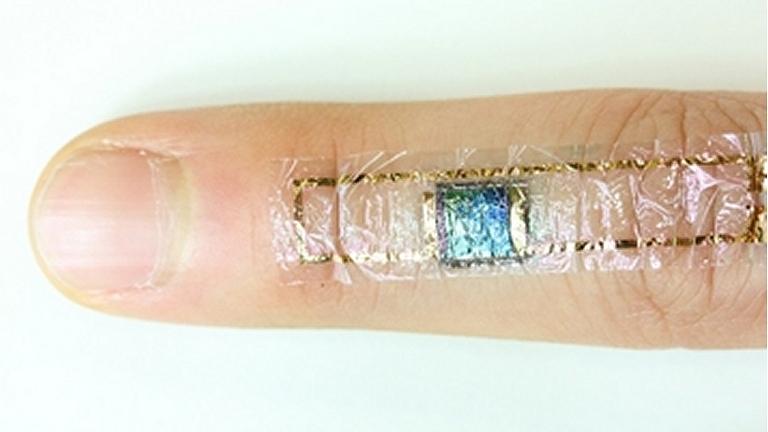TECH

Solar Powered Cardiac Monitor
Solar cell instead of battery
Self-powered devices that can be placed directly on the skin or in human tissues and organs have great potential for medical applications.They could be used as physiological sensors for real-time monitoring of heart or brain functioning, for example.In practice, however, the volume of the batteries or the insufficient amount of energy, and the interference of the power supply, have been obstacles difficult to overcome.A Japanese team has just presented a solution to this dilemma: a highly efficient photoconversion system - converting light into electricity - from plastic solar cells, those made by printing on flexible substrates.Sungjun Park and his colleagues have achieved this by generating a system of nanoscale grooves on the surface of the solar cell, which has the additional benefit of capturing light from a range of larger incident angles. The process is expensive for large conventional solar panels, but is suitable for small solar sources.The resulting solar cells showed a high power-to-weight ratio of 11.46 watts per gram and a photoconversion efficiency (EFC) of 10.5%, approaching the "magic number" of 15%, which will make the cells competitive organic photovoltaics with their silicon homologues.Although organic solar cells still have problems with durability, with a short shelf life, the prototypes showed a reduction in EFC of only 25% (from 9.82% to 7.33%) during 900 cycles, which also exceeds the needs of a medical apparatus.
Solar Powered Medical Sensor
To demonstrate practical application, the team integrated organic electrochemical transistors - a type of sensor - along with the solar cells into an ultra-thin substrate (1 mm), to allow the detection of heartbeats and the recording of the signals of an electrocardiogram. The tests were done directly on the heart of laboratory animals.The device worked well at a lighting level of 10,000 lux - equivalent to a sunny daylight - and presented less noise than similar devices connected to a battery, presumably thanks to the elimination of the wires for the transmission of electricity.elimination of wires for the transmission of electricity."This is a nice step forward in the search for the manufacture of self-powered medical monitoring devices that can be placed in human tissues. There are some important tasks to be done, such as the development of flexible energy storage devices, and we will continue to collaborate with others groups to produce practical devices."It is important to note that for current experiments we work on the analog part of our device, which feeds the instrument and performs the measurement. There is also a silicon-based digital portion for data transmission, and more work in that area will also help make these devices practical, "said Professor Kenjiro Fukuda of the RIKEN Institute.
Bibliography:Self-powered ultra-flexible electronics via nano-grating-patterned organic photovoltaics
Sungjun Park, Soo Won Heo, Wonryung Lee, Daishi Inoue, Zhi Jiang, Kilho Yu, Hiroaki Jinno, Daisuke Hashizume, Masaki Sekino, Tomoyuki Yokota, Kenjiro Fukuda, Keisuke Tajima, Takao Someya

No comments:
Post a Comment